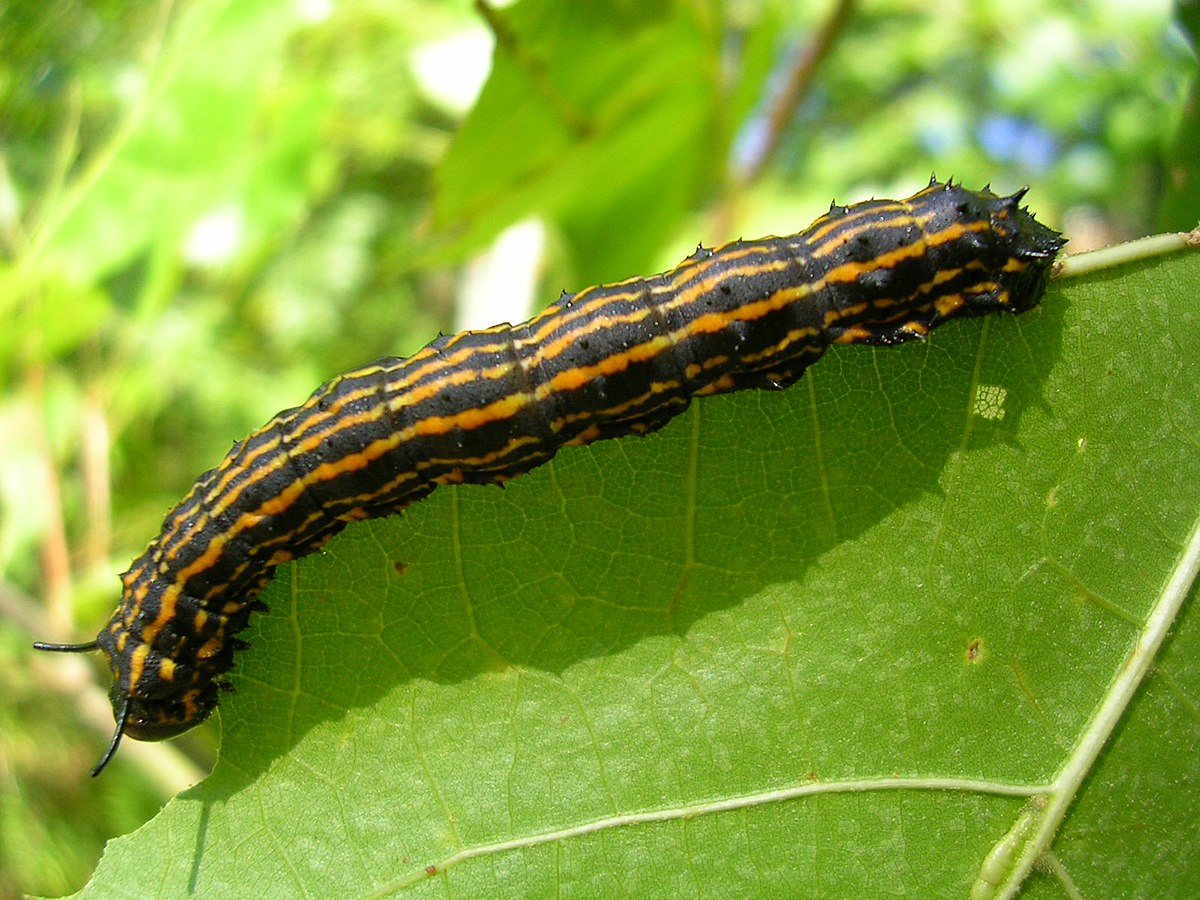By ecoRI News staff
 |
| Orange-striped oakworm caterpillar. (Wikipedia) |
The caterpillars feed on
the foliage of all species of oak trees, and have been detected in forested
areas in central Scituate and Coventry and parts of Foster that were previously
stressed by gypsy moth and forest tent caterpillars.
Other areas in the state may also be affected, according to DEM.
Other areas in the state may also be affected, according to DEM.
Unlike gypsy moths,
the orange-striped oakworm is
native to North America and can be found throughout New York and New England.
Although outbreaks of
orange-striped oakworm occasionally cause widespread defoliations lasting two
to four years, insects, diseases and other natural enemies build up over time
and reduce the population to tolerable levels, according to DEM.
Pockets of defoliation are typically less than 1,000 acres. In 2005, nearly 16,000 acres were affected in central Scituate and Coventry, according to state officials.
Pockets of defoliation are typically less than 1,000 acres. In 2005, nearly 16,000 acres were affected in central Scituate and Coventry, according to state officials.
Orange-striped oakworm
defoliate trees in late summer/early fall and don’t pose a significant harm to
trees, because the leaves have finished photosynthesizing and are beginning to
harden off for winter.
“We see some amount of
defoliation from this native insect every year. It's not generally a problem
because defoliation happens so late in the year, and we normally wouldn’t
expect to see much additional tree death,” said Heather Faubert of the
University of Rhode Island Department of Plant Sciences and Entomology.
However, because oak
trees have already been stressed this year by drought and gypsy moth
defoliation, measurable tree mortality is expected. If standing dead trees
become a safety hazard they should be removed, according to DEM. Homeowners are
encouraged to seek the services of a Rhode Island licensed arborist to
provide that service.
Standing dead trees,
however, can be beneficial, as they provide homes to many cavity-nesting birds
and perches for raptors.
Some added advice from DEM:
Forest landowners managing their property
for forest uses should consider these and other wildlife values and work with
their forester to incorporate these goals into their management plans, and use
a DEM-registered Wood's Operator should any removals or salvage operations be
needed.
For questions, email DEM's Division of
Forest Environment at DEM.ForestPest@dem.ri.gov.
For additional information on orangestriped oakworm, visit http://msue.anr.msu.edu/uploads/files/e2654.pdf. Follow DEM on Twitter (@RhodeIslandDEM) or Facebook at www.facebook.com/RhodeIslandDEM for timely updates.
Related links
Rhode Island Woods:
Licensed Arborists